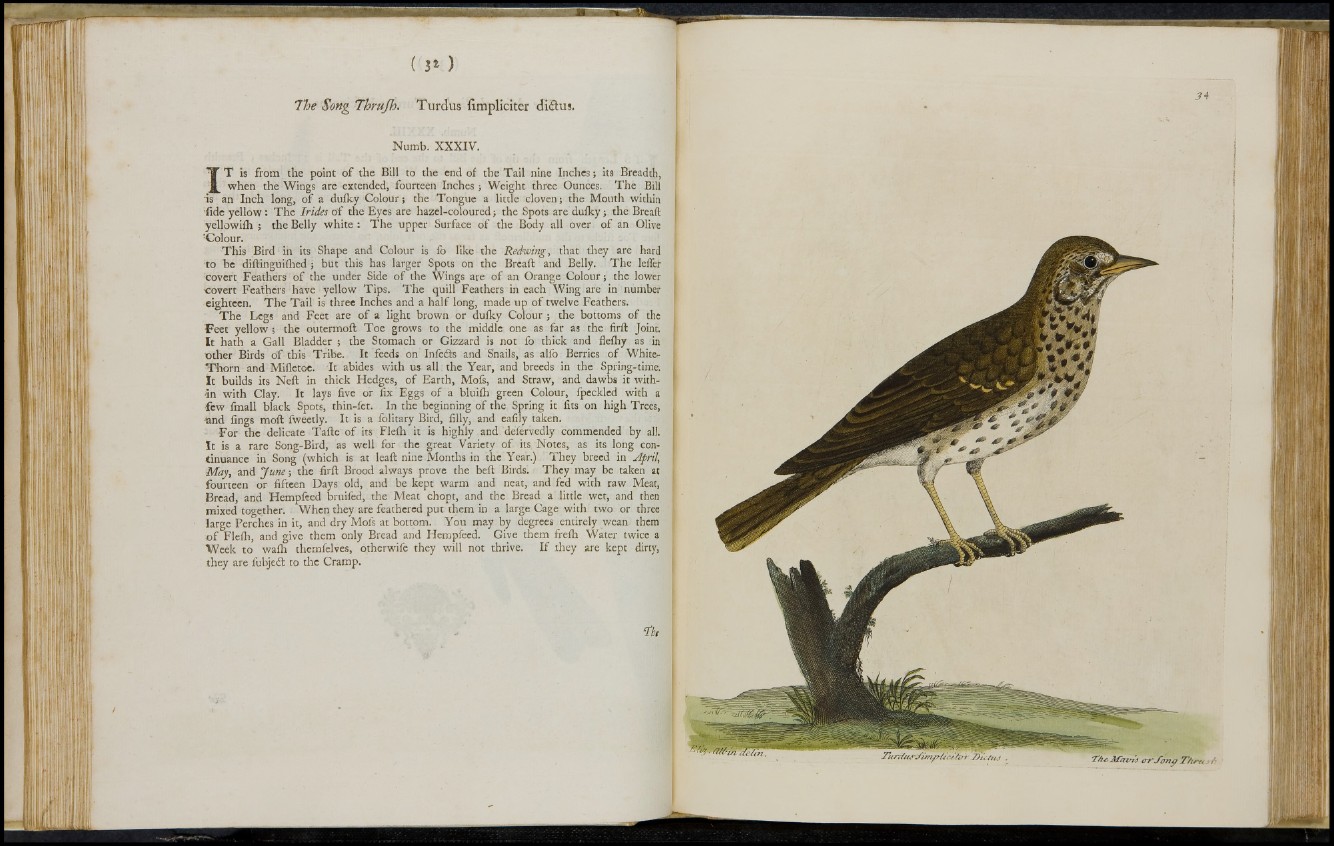
('3* )
The Song Thrujh. Turdus fimpliciter didlus.
Numb. XXXIV.
XT is from the point of the Bill to the end of the Tail nine Inches; its Breadth,
when the Wings are extended, fourteen Inches ; Weight three Ounces. The Bill
is an Inch long, of a duiky Colour; the Tongue a little cloven; the Mouth within
•fide yellow: The Irides of the Eyes are hazel-coloured; the Spots are duiky; the Breaft
yellowifh ; the Belly white : The upper Surface of the Body all over of an Olive
'■Colour.
This Bird in its Shape and Colour is fo like the Redwing, that they are hard
to be diftinguiihed; but this has larger Spots on the Breaft and Belly. The lefler
covert Feathers of the under Side of the Wings are of an Orange Colour; the lower
■covert Feathers have yellow Tips. The quill Feathers in each Wing are in number
eighteen. The Tail is three Inches and a half long, made up of twelve Feathers.
The Legs and Feet are of a light brown or duiky Colour; the bottoms of the
Feet yellow; the outermoft Toe grows to the middle one as far as the firft Joint.
It hath a Gall Bladder ; the Stomach or Gizzard is not fo thick and flelhy as in
other Birds of this Tribe. It feeds on In feds and Snails, as alfo Berries of White-
Thorn and Milletoe. It abides with us all: the Year, and breeds in the Spring-time.
It builds its Neft in thick Hedges, of Earth, Mols, and Straw, and dawbs it within
with Clay. It lays five or fix Eggs of a bluilh green Colour, fpeckled with a
few fmall black Spots, thin-fet. In the beginning of the Spring it fits on high Trees,
■and lings moft fweetly. It is a folitary Bird, filly, and eafily taken.
■For the delicate Tafte of its Flelh it is highly and defervedly commended by all.
It is a rare Song-Bird, as well for the great Variety of its Notes, as its long continuance
in Song (which is at leaft nine Months in the Year.) They breed in April,
May, and Ju n e ; the firft Brood always prove the beft Birds! They may be taken at
fourteen or fifteen Days old, and be kept warm and neat, and fed with raw Meat,
Bread, and Hempfeed bruifed, the Meat chopt, and the Bread a .little wet, and then
mixed together. When they are feathered put them in a large Cage with two or three
large Perches in it, and dry Mols at bottom. You may by degrees entirely wean them
o f Flelh, and give them only Bread and Hempfeed. Give them frelh Water twice a
Week to walh themfelves, otherwife they will not thrive. If they are kept dirty,
they are fubjedt to the Cramp.
The